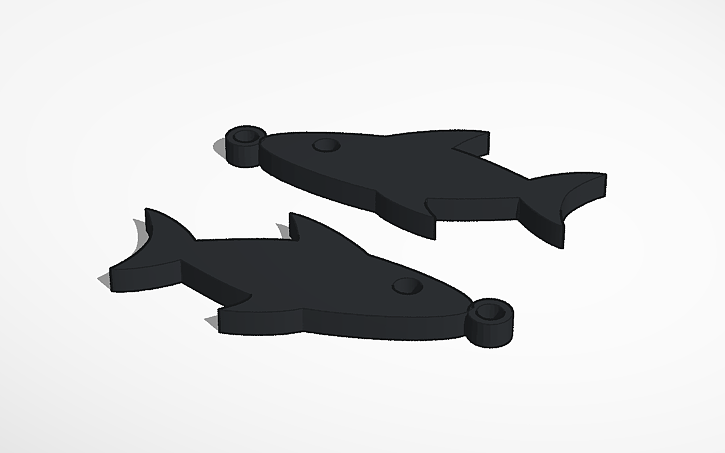This week in class we had the opportunity to visit the Digital Scholarship Commons where we had a 3-D Design and Printing workshop. During this workshop, we learnt about the uses of 3-D Design and printing in K-12 classrooms. I had never had hands-on experience with anything to do with 3-D design or printing but I have heard a lot about it so having the opportunity to try it for myself was a great experience.
We had the opportunity to design and submit our creations for printing, there were so many different ideas and everyone had the chance to be creative and express their interests. I chose to make a fish key chain, I had to find an image of a fish that I liked and then import it into TinkerCad. TinkerCad is the program that we used to design the object or item to be printed, using this platform was a bit of a learning curve. Trying to figure out how to manipulate the objects, how to create certain shapes and how to adjust the perspective were a few things that took me a second to understand. But once I did, I had such a feeling of accomplishment and success, I was very proud of myself in that moment.
One way that I think this technology can be used as a cross-curricular learning opportunity is when connecting it with history. Specifically, by re-creating historical landmarks or historical artifacts, by doing this you can bring the structures and the artifacts into the classroom without having to get the actual object or go to the space. Let’s think about Stonehenge, a very famous monument. This monument is in a completely different country and on a different continent so; by creating the structure by using 3-D printing, you can bring a piece of history into the classroom to touch and see not just as an image.
I am hoping to teach in the 2-4 grade level and a pro of using 3D design and print in these grades is the amount of creativity and freedom that this technology provides. You can create anything you can think of and that is such a valuable lesson for learners, that there are no bounds to creativity and that if you can think it there is a way to create it. A con that I can think of, however, is the fact that there is a bit of a learning curve that may deter some students. The program that we used, TinkerCad, was a little challenging for some of my classmates to understand so it may be even more challenging for those who are younger. Also, the fact that it is on a screen and not a tactile project may not be the best for some students. Overall I think it is valuable to think of ways that you could use 3D design and print in the classroom and modify it for the age you are teaching.

This is the fish keychain I designed